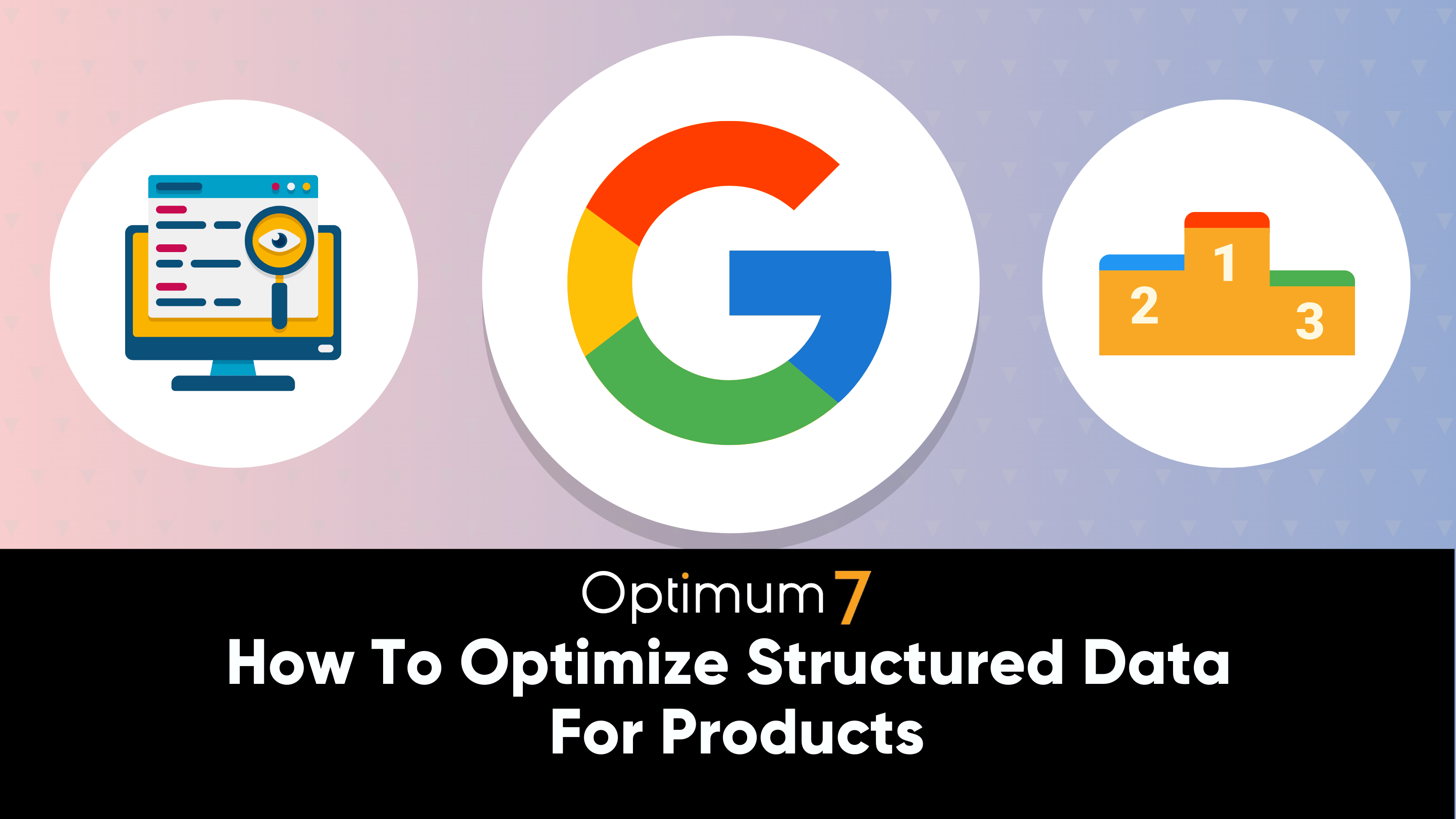Structured data is essential for eCommerce sites to improve search engine visibility and user engagement. It helps search engines understand your website content, ensuring your products are indexed and displayed accurately in search results. But what does this mean for your business, and why is it so beneficial?
Understanding Structured Data and Its Importance
Structured data provides a standardized way to describe your webpage content, enhancing the information that appears in search results. Have you ever seen product listings with star ratings, prices, or availability directly in search results? That’s structured data in action. Formats like JSON-LD, Microdata, and RDFa enable this detailed communication with search engines.
For eCommerce sites, it’s not just a technical enhancement—it’s essential for SEO and user engagement. By organizing and labeling your product data clearly, search engines can crawl your site more effectively, displaying your products prominently in search results. This attracts more qualified traffic—customers who are actively searching for what you offer.
Transforming search results by making product listings more appealing, structured data allows search engines to create rich snippets that feature images, ratings, and other useful information. These snippets are compelling, encouraging higher click-through rates due to their detailed nature and visual appeal.
Improving user experience by providing the exact information users seek, structured data reduces the time spent navigating through your site. This level of detail directly addresses user queries, ensuring that the traffic driven to your site is more likely to engage and convert, thanks to the clear and helpful product information presented right from the search engine results pages (SERPs).
Basically, it’s like giving search engines the inside scoop on what our page is all about!
How Structured Data Enhances SEO and User Experience
Structured data enhances your SEO efforts by making your product listings more appealing in search results. When your product pages contain structured data, search engines can create rich snippets—those eye-catching search results featuring images, ratings, and a wealth of other useful information. These snippets aren’t just informative; they’re compelling, encouraging higher click-through rates due to their detailed nature and visual appeal.
Structured data improves user experience by providing the exact information users seek, reducing the time spent navigating through your site. This level of detail directly addresses user queries, ensuring that the traffic driven to your site is more likely to engage and convert, thanks to the clear and helpful product information presented right from the search engine results pages (SERPs).
Best Types of Structured Data for eCommerce
1- Product Schema
The Product schema is a type of markup specifically designed to communicate details of your products to search engines. Implementing this schema involves marking up various elements such as the product name, price, availability, and reviews. By providing this detailed information, your product listings in search results become richer and more informative, directly impacting customer decisions and perceptions.
For instance, if you mark up the availability of a product, potential customers can see whether the item is in stock directly from the search results, saving them the frustration of discovering stock issues later in the shopping process. Similarly, displaying reviews and ratings builds trust and influences purchasing decisions by showcasing customer satisfaction upfront.
For More Information:
https://developers.google.com/search/docs/appearance/structured-data/product
2- Review and Rating Schema
Utilizing the Review and Rating schema allows you to display customer feedback directly in the search results. This not only helps build trust with potential customers but also influences their purchasing decisions.
Seeing existing customer feedback before even visiting the site can significantly impact a buyer’s confidence in their purchase decision, making it a powerful tool for conversion.
For More Information:
https://developers.google.com/search/docs/appearance/structured-data/review-snippet
3- Breadcrumb Schema
Breadcrumb schema plays a critical role in user navigation and search engine understanding of your site structure. By implementing this schema, you help users navigate your site more effectively, providing a clear path from general content to more specific items. This is particularly useful in eCommerce, where the ability to backtrack or understand the site’s layout can enhance the shopping experience significantly.
For More Information:
https://developers.google.com/search/docs/appearance/structured-data/breadcrumb
4- Local Business and Organization Schema
For eCommerce businesses with physical locations, the Local Business and Organization schemas are invaluable. These help provide critical details such as business location, operating hours, and contact information, which are essential for local SEO. They make it easier for local customers to find your store, know when you are open, and how to get in touch, directly impacting foot traffic and local sales.
By understanding and implementing these key types of structured data, you can significantly enhance your product visibility and user experience, laying a solid foundation for increased sales and customer satisfaction.
For More Information:
https://developers.google.com/search/docs/appearance/structured-data/local-business
Implementing Structured Data: Best Practices
Implementing structured data on your eCommerce site can dramatically improve how your products are displayed in search results, but it’s important to adhere to best practices to maximize these benefits. Accurate and consistent data not only boosts SEO but also ensures that users have a reliable and informative experience when they visit your site.
Choosing the Right Schema
Choosing the appropriate schema type for your content is essential. The selection depends on the nature of your product and the information you wish to highlight. For general product information, the Product schema is usually the best fit, but for more specific details like customer feedback or business locations, the Review and Rating or Local Business schemas might be more appropriate.
Here are some practical tips for matching schema types with product features:
- Analyze Your Product Offering:
Understand the key features and benefits of your products. What information would be most valuable to a potential buyer? Prioritize these details in your schema markup. - Consider Your Business Model:
Are you selling products directly, or are you also providing services? Your business model can determine the types of schemas that would be most beneficial. For example, a local store might benefit more from Local Business schema, while an online-only shop might focus on Product and Review schemas.
Tools and Platforms for Implementing Structured Data
Several tools and platforms can help you implement structured data effectively. Schema.org provides a vast repository of schema types and guidelines that can be invaluable. Additionally, Google’s Structured Data Testing Tool allows you to test your schema implementation to ensure it is correctly formatted and recognized by search engines.
Using these tools involves:
- Schema.org: Browse through the available schemas and find the ones that best match your content. Schema.org also provides examples and specific guidelines on how to implement each type of schema.
- Google’s Rich Results Test: After implementing your schema, use this tool to validate your pages. This will help you catch any errors and ensure your data is correctly structured, which is crucial for maximizing SEO benefits.
Common Mistakes to Avoid in Structured Data Implementation
While structured data can significantly enhance your SEO and user experience, certain common mistakes can undermine these benefits:
- Incorrect Tagging:
Mislabeling elements or using the wrong schema types can lead to misinformation in search results, damaging your credibility and SEO. - Inconsistency in Data:
Your structured data should always match the content on the page. Inconsistencies can confuse search engines and lead to penalties. - Over-markup:
Avoid marking up irrelevant or unnecessary information which can clutter and dilute the effectiveness of your structured data.
Avoiding these pitfalls is crucial for a successful structured data strategy. Regular audits and validations of your structured data implementations can help maintain accuracy and consistency, ensuring that your eCommerce site continues to benefit from enhanced search visibility and user engagement.
By adhering to these best practices in implementing structured data, you can ensure that your eCommerce site not only meets but exceeds the expectations of both search engines and users, leading to improved visibility, traffic, and ultimately, conversions.
Technical Considerations: JSON-LD, Microdata, RDFa
Choosing the right format for implementing structured data is also crucial. The main types used in eCommerce are JSON-LD, Microdata, and RDFa. Each has its own benefits and optimal use cases:
- JSON-LD:
Recommended by Google, JSON-LD is a script-based format and is easier to add and update without altering the HTML that makes up the content of your pages. It’s generally the best choice for dynamically driven websites. - Microdata:
Embedded directly in HTML, it’s intuitive for those familiar with HTML and useful for static content. However, it can be more labor-intensive to implement and maintain. - RDFa:
Similar to Microdata but with more flexibility, RDFa works well for those who need to mark up meta-data within HTML documents.
For most eCommerce sites, JSON-LD is often the preferred choice due to its ease of implementation and maintenance, especially on dynamic platforms where products and details frequently change.
By focusing on these strategies and technical considerations, you can optimize your product data effectively. This not only improves how your products are displayed in search engines but also enhances user interaction by making crucial information readily available and easy to understand. Ultimately, structured data optimization is about making your products more accessible and attractive to your target audience, leading to better engagement and increased sales.
Advanced Techniques and New Developments
As the digital landscape evolves, staying ahead in eCommerce requires not only adopting current best practices but also anticipating and integrating advanced techniques and upcoming trends. The future of structured data in eCommerce is likely to be influenced by cutting-edge technologies like artificial intelligence (AI) and machine learning (ML), offering new ways to optimize data for better search engine rankings and user experiences.
Leveraging AI and Machine Learning
AI and ML are transforming how structured data is utilized for SEO and customer engagement. These technologies can analyze large volumes of data to identify patterns and insights that humans might miss. Here’s how they can enhance your structured data strategy:
- Automated Optimization: AI algorithms can automate the process of structuring data, ensuring that it is both accurate and optimized for the best possible performance in search results.
- Personalization:
Machine learning can help personalize the shopping experience for users by dynamically adjusting the structured data presented based on user behavior and preferences. This could mean altering product recommendations and highlighting features in real-time to match the interests of the viewer.
Emerging Trends in Structured Data
Several emerging trends could significantly impact the effectiveness of structured data in eCommerce, including:
- Voice Search Optimization:
With the rise of smart speakers and virtual assistants, optimizing for voice search is becoming increasingly important. Structured data needs to be tailored to answer conversational queries, focusing on more natural language and question-based formats. - Richer Visual Representations:
Beyond traditional text-based information, there’s a growing trend towards incorporating richer media formats like videos and interactive elements into structured data. This can enhance user engagement and provide more comprehensive information at a glance.
Conclusion
Throughout this exploration of structured data for eCommerce, we’ve covered the critical importance of structured data in enhancing SEO and user experience, the key types of structured data that are most effective for eCommerce sites, the best practices for implementation and the advanced techniques and new developments that can set your business apart.
Structured data is not merely a tool for improving how products are displayed in search results; it is a comprehensive strategy that, when executed correctly, can significantly increase your online visibility, enhance user engagement, and boost sales. By providing rich snippets, improving local SEO, and enabling more detailed and visually engaging product presentations, structured data makes your eCommerce site more accessible and attractive to potential customers.
Choose Optimum7 for Better SEO
When considering how to implement these strategies effectively, partnering with a knowledgeable and experienced digital marketing agency like Optimum7 can make all the difference. Optimum7 specializes in leveraging the latest in SEO practices, including cutting-edge structured data strategies, to ensure that your eCommerce site not only meets the current standards but also anticipates and adapts to future trends.
Choosing Optimum7 as your digital marketing agency means gaining a partner that is committed to understanding the unique needs and challenges of your business. Our expertise in SEO, combined with a proactive approach to digital marketing, ensures that your eCommerce operations are optimized for the highest possible search engine rankings and customer engagement. With Optimum7, you can trust that your eCommerce site will be equipped to thrive in a competitive digital landscape, attracting more traffic and converting more sales through the strategic use of structured data and other digital marketing techniques.










